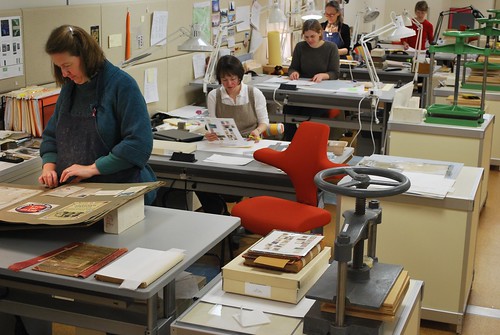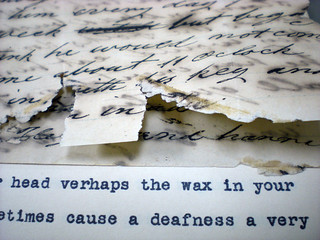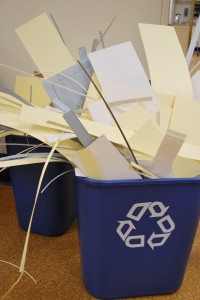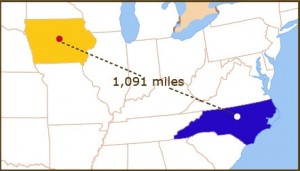 Happy New Year from the 1091 Project. This month we are looking at the year ahead and discussing what is looming on our horizons. Maybe we will make a resolution or two for good measure.
Happy New Year from the 1091 Project. This month we are looking at the year ahead and discussing what is looming on our horizons. Maybe we will make a resolution or two for good measure.
As many of you know the library is undergoing a renovation that is slated to be finished in 2015. Conservation is literally on the other side of the construction site’s wall. So far we have endured one major leak due to a severed water pipe and one minor leak due to a clogged drain. Right now we are listening to the dulcet tones of the hoe ram as it breaks up bedrock. My wish for this new year is that we get through the next 18 months with no more major incidents.
As part of the 2015 grand opening celebration we will be helping to install a major exhibit for the Rubenstein Library. Decisions are already being made about the materials that will go into the exhibit. We will be pulling these items soon to start the evaluation and treatment process. The exhibit spaces in the library will also be expanding as part of the renovation. As a result, we will see an increased demand in exhibit preparation services and we will need to make sure resources are in place to accommodate this workflow.
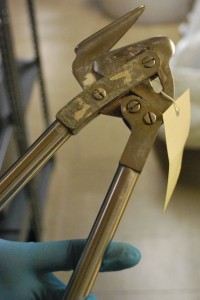
We have a couple of large boxing projects on the horizon. Similar to the re-boxing of the papyri, these will be long-term projects that we will do over the course of multiple Boxing Days. One such project is the continued boxing of items from the History of Medicine’s instruments and artifact collection. These are always fun to work with, if not a bit frightening.
We have a couple of in-house training sessions planned that focus on deacidification and washing techniques that staff have learned either through attending workshops or through their research. These techniques give us the opportunity to work on materials that we may not have treated in the past due to the lack of a sound treatment protocol.
The other rapidly expanding workflow on our horizon is digital project preparation. Erin is in charge of coordinating this workflow with the Digital Production Center and the library’s new Digital Projects Coordinator. We need to determine our capacity for evaluating and treating materials slated for digitization, and strategize ways to respond to an increase in this workflow as that program expands.
We have one very exciting top-secret project we are working on that I am not at liberty to make public quite yet. Stay tuned for an announcement later in the spring. Let’s see what 2014 holds for Parks Library Preservation.


